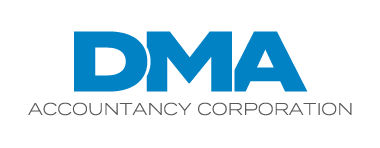Construction companies have always faced challenges when it comes to cash flow. The difficulty largely springs from the often-lengthy gaps between winning projects, doing the work and receiving payments.
As a result, it’s critical for construction business owners and their leadership teams to master the fundamentals of cash flow management. Here are a few to keep in mind.
Banking strategy
Where does your revenue go when you get paid? Hopefully not into a shoebox under your desk! Construction companies need a banking strategy, whereby they consciously plan where to keep their money and in what type of accounts.
Think of your bank as a cash flow management partner. If you’re dissatisfied with the services you’re receiving, you obviously shouldn’t hesitate to shop around. When contacting a prospective bank or working with your current rep, ask about specific ways the institution can help your construction company.
For example, you may be able to create a sweep account that automatically transfers excess funds into an “overnight” investment account. This way, at least some of your funds are earning interest instead of just sitting in checking or savings. Also ask about the latest bonuses and promotions being offered. Banking is a competitive industry these days and you may be able to benefit.
Financial forecasting
Sound financial forecasting is another cash flow fundamental. It involves estimating cash needs by analyzing past billings, tracking payments on current projects, and projecting expected revenue from your backlog — all while keeping a close eye on direct and indirect costs, as well as overhead.
You can prepare forecasts on a job-by-job basis or for the company as a whole. Forecasting’s major benefit is identifying surplus and deficient cash flow periods. Done properly and regularly, it should help you:
- Ensure that cash flow remains at an acceptable level,
- Allocate excess cash for investments or capital goods,
- Set up disbursements to better align with receipts,
- Pinpoint cash deficiency periods to optimize borrowing terms, and
- Identify the clear need for additional working capital.
Precisely how to go about forecasting is beyond the scope of this particular article. Suffice to say that qualified professional advice and the right software can go a long way toward making it a reality.
Report generation and financial statements
Cash inflows for construction companies largely come from accounts receivable. Unfortunately, many contractors struggle with accounts receivable management because they don’t maintain proper documentation or fail to make this documentation available to accounting or financial staff in a timely manner. Subsequently, cash flow suffers.
Choose regular, specific dates to generate accounts receivable reports and ensure those reports are automatically distributed to pertinent employees such as your fellow owners, CFO and project managers. Also, set up monthly meetings to discuss accounts receivable and strategize collections.
Strong financial reporting — including generating financial statements in accordance with Generally Accepted Accounting Principles (GAAP) — is another key. After all, along with the income statement and balance sheet, a statement of cash flows is an essential part of GAAP-compliant financial statements. It specifically describes all cash inflows and outflows, whether from operations, investments or financing activities. This is important, insightful data.
Of course, many businesses create a full set of financial statements only once a year. So, be sure to augment your statement of cash flows with more regular cash flow reports. Monthly is common.
Critical function
It cannot be overstated how important cash flow management is for construction companies. We’ve touched on just a few fundamentals in this article. Contact our firm for help with this critical business function.
© 2024


Recent Comments